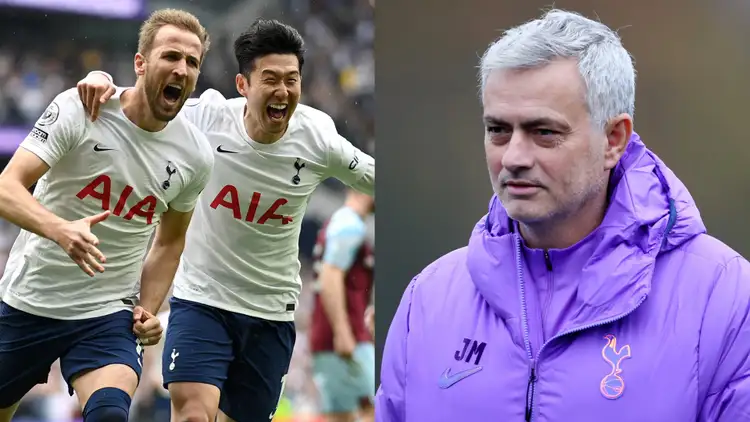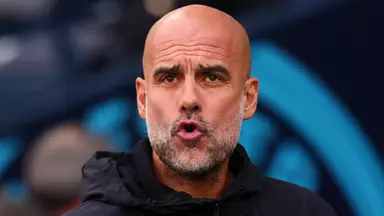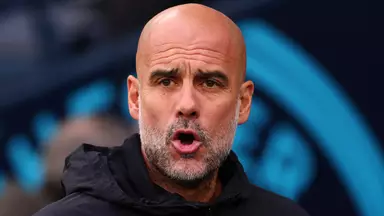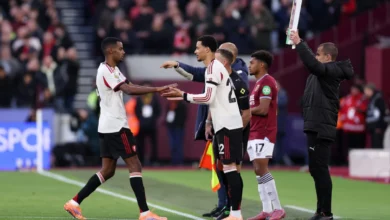Man City told player they submitted £100m offer for is better than Erling Haaland
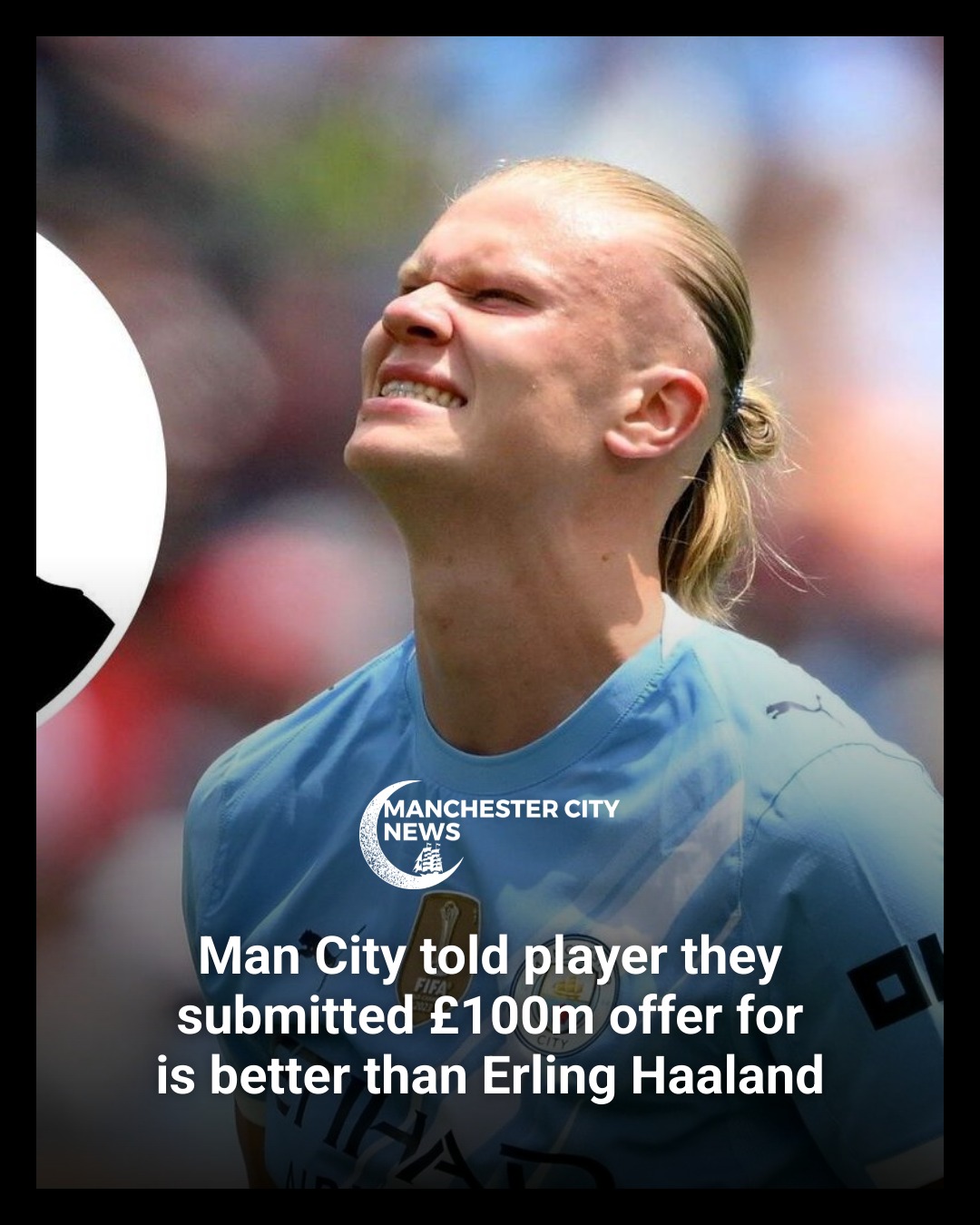
In the summer of 2021, Manchester City found themselves at a crossroads. Fresh off another Premier League title but lacking a natural striker following Sergio Aguero’s departure, Pep Guardiola’s side desperately needed a focal point for their attack. Their primary target was clear: Harry Kane, Tottenham’s talismanic striker and England’s captain. City went as far as submitting a £100 million bid for the striker, a move that would have reshaped the landscape of English football.
However, Tottenham’s steadfast refusal to sell their prized asset forced City to pivot. A year later, they secured the services of Erling Haaland from Borussia Dortmund for a relatively modest £51 million release clause. What followed has been nothing short of extraordinary, yet the debate continues to rage: did City get the better striker, or would Harry Kane have been the superior choice?
The Norwegian Phenomenon: Haaland’s Meteoric Rise
Erling Haaland’s impact at Manchester City has been nothing short of sensational. Since his arrival in 2022, the Norwegian striker has rewritten the record books and established himself as one of the most feared forwards in world football. His statistics speak volumes: 124 goals and 21 assists across 146 matches represent a goal-scoring rate that defies belief in modern football.
The 24-year-old’s debut season was particularly remarkable, as he shattered numerous Premier League records. His 36 league goals in his first campaign broke the previous record for most goals scored by a player in their debut Premier League season. The ease with which he adapted to English football, combined with his physical presence and clinical finishing, made him an instant hit with City supporters.
What sets Haaland apart is his unique combination of physical attributes and technical ability. Standing at 6’4″ with incredible pace and strength, he possesses the tools to dominate defenders in ways few strikers can. His movement in the box is exceptional, with an innate ability to find space and position himself for scoring opportunities. The Norwegian’s left foot is particularly deadly, capable of generating tremendous power and accuracy from various angles and distances.
Despite his remarkable success, Haaland’s most recent season has drawn some criticism. With 34 goals in all competitions, some observers suggested it represented a decline in his standards – a testament to the impossibly high bar he had set for himself. Injuries and periods of inconsistent form contributed to this perceived dip, yet even in his “worst” season, he outscored many of Europe’s elite strikers.
The English Captain: Kane’s Consistent Excellence
Harry Kane’s journey to becoming one of Europe’s premier strikers has been markedly different from Haaland’s explosive emergence. The England captain’s rise through Tottenham’s youth system and subsequent development into a world-class striker represents a more traditional path to success. His move to Bayern Munich in 2023 marked a new chapter in his career, one that has validated his status as one of the game’s elite performers.
Kane’s most recent season statistics tell a compelling story: 41 goals and 14 assists in 51 games demonstrate not only his goal-scoring prowess but also his ability to create opportunities for teammates. This dual threat makes him incredibly valuable to any team, as he can drop deep to link play while still maintaining his presence in the penalty area when needed.
The Englishman’s technical ability is perhaps his greatest asset. His first touch, passing range, and football intelligence allow him to operate effectively in various tactical systems. Unlike the more direct approach that Haaland often employs, Kane’s game is built on subtlety and understanding. His ability to read the game, drop into deeper positions, and create space for others makes him a more complete footballer in the eyes of many observers.
Kane’s leadership qualities cannot be understated. As England’s captain and a player who has consistently performed at the highest level for both club and country, he brings an intangible quality that extends beyond statistics. His experience in crucial moments, particularly in international tournaments, demonstrates a mental strength that few players possess.
The Tactical Dimension: Different Strikers, Different Systems
The debate between Kane and Haaland extends beyond individual statistics to encompass tactical considerations. Pep Guardiola’s Manchester City system has been tailored to maximize Haaland’s strengths while accommodating his limitations. The Norwegian’s preference for operating in central areas, combined with his explosive pace and movement, has allowed City to adopt a more direct approach in certain situations.
Haaland’s presence has fundamentally altered City’s attacking patterns. His ability to stretch defenses vertically creates space for the likes of Kevin De Bruyne, Phil Foden, and Bernardo Silva to operate in. The Norwegian’s movement often drags center-backs out of position, creating opportunities for City’s attacking midfielders to exploit the spaces left behind.
In contrast, Kane’s style would have required a different tactical approach. His tendency to drop deep and link play would have necessitated different movement patterns from City’s attacking midfielders. The Englishman’s superior passing ability and vision might have created different types of chances, potentially leading to more varied attacking patterns.
The question of tactical fit becomes particularly relevant when considering City’s Champions League ambitions. Haaland’s pace and power have proven effective against certain types of defenses, but his touch and link-up play have occasionally been questioned in games requiring more intricate build-up play. Kane’s technical ability and experience might have provided different solutions in Europe’s premier competition.
Statistical Analysis: Numbers Tell a Story
When examining the statistical comparison between the two strikers, several interesting patterns emerge. In the most recent season, Kane’s 41 goals in 51 games represent a slightly better goals-per-game ratio than Haaland’s 34 goals in 48 games. However, this comparison must be contextualized within their respective leagues and tactical systems.
Kane’s 14 assists compared to Haaland’s 5 highlight one of the key differences between the two players. The Englishman’s superior assist numbers reflect his deeper involvement in build-up play and his ability to create chances for teammates. This aspect of his game makes him a more complete attacker and potentially more valuable to teams that require their striker to contribute beyond just goal-scoring.
The minutes-per-goal ratio also provides insight into their respective efficiencies. Kane’s 96.5 minutes per goal compared to Haaland’s 118.9 minutes per goal in the most recent season suggests that the England captain was more clinically efficient. However, this must be balanced against the different tactical roles they perform and the varying quality of chances they receive.
Age becomes a crucial factor in any long-term comparison. At 24, Haaland represents a more future-proof investment compared to Kane, who is 31. The seven-year age gap means that City’s decision to pursue Haaland over Kane was not just about immediate impact but also about long-term planning and potential resale value.
The Intangibles: Leadership, Experience, and Mentality
Beyond statistics and tactical considerations, the debate between Kane and Haaland involves several intangible factors that are difficult to quantify but equally important. Kane’s experience as England captain and his performances in high-pressure situations demonstrate a mental fortitude that has been tested at the highest level.
The Englishman’s leadership qualities extend beyond wearing the armband. His work ethic, professionalism, and ability to elevate his teammates’ performances represent valuable assets that don’t appear in statistical analyses. Kane’s experience in crucial matches, including World Cup semi-finals and European Championship finals, provides a psychological advantage that younger players often lack.
Haaland, while lacking Kane’s experience, possesses a different type of mentality. His confidence and self-belief are evident in his playing style and public statements. The Norwegian’s ability to maintain his goal-scoring form despite facing intense scrutiny and expectation demonstrates remarkable mental strength for someone his age.
The cultural and linguistic factors also play a role in their respective adaptations. Kane’s familiarity with English football culture and his established relationships within the England national team setup might have provided smoother integration at City. Haaland’s adaptation to English football has been seamless, but his journey represents a more significant cultural adjustment.
The Verdict: Context Matters
The question of whether Kane is “better” than Haaland, as suggested by pundit Darren Bent, cannot be answered definitively without considering context. Both players represent different archetypes of modern striker, each with distinct advantages and limitations.
Kane’s superior technical ability, playmaking skills, and leadership qualities make him a more complete footballer in many respects. His ability to contribute to build-up play while maintaining his goal-scoring threat provides tactical flexibility that few players can match. The Englishman’s consistency over a longer period and his performances in crucial moments demonstrate a reliability that coaches value highly.
Haaland’s youth, pace, and raw goal-scoring ability represent a different type of value proposition. His potential for improvement, combined with his already impressive achievements, suggests that his best years are still ahead of him. The Norwegian’s unique physical attributes and movement patterns create problems for defenders that are difficult to replicate.
Manchester City’s Perspective: The Right Choice?
From Manchester City’s perspective, the decision to pursue Haaland over Kane appears vindicated by results. The Norwegian’s immediate impact, combined with his age and potential for growth, aligns with the club’s long-term planning. His goal-scoring records and contribution to City’s continued success justify the decision from both sporting and financial perspectives.
However, the hypothetical question remains: would Kane have been equally successful at City? The Englishman’s technical ability and tactical intelligence might have integrated seamlessly with Guardiola’s system, potentially creating different but equally effective attacking patterns. His experience and leadership might have provided additional value in crucial Champions League matches.
The financial aspect also favors City’s decision. Haaland’s lower transfer fee and younger age represent better value for money, particularly considering the potential for future resale. Kane’s higher wage demands and limited resale value would have created different financial dynamics.
Looking Forward: The Future of Both Strikers
As both players continue their careers, the debate between Kane and Haaland will likely evolve. Kane’s move to Bayern Munich has provided him with new challenges and opportunities to prove his worth in a different environment. His success in the Bundesliga demonstrates his adaptability and reinforces his status as one of Europe’s elite strikers.
Haaland’s future at Manchester City appears bright, with potential for further development under Guardiola’s guidance. The Norwegian’s goal-scoring records suggest that he has the ability to become one of the greatest strikers in football history. His partnership with players like Kevin De Bruyne and the potential addition of new talents like Rayan Cherki could unlock even greater potential.
The international stage will continue to provide opportunities for both players to showcase their abilities. Kane’s role as England captain ensures his continued prominence, while Haaland’s emergence as Norway’s talisman promises exciting developments for his national team.
Conclusion: A Matter of Preference
The debate between Harry Kane and Erling Haaland ultimately comes down to personal preference and tactical requirements. Both players represent excellence in their respective styles, and both would enhance virtually any team in world football.
Kane’s completeness as a footballer, combined with his leadership qualities and proven track record, makes him an attractive proposition for teams requiring a multifaceted striker. His ability to adapt to different tactical systems and his consistency over time demonstrate qualities that are highly valued in modern football.
Haaland’s unique combination of physical attributes, goal-scoring instinct, and age-related potential makes him an equally compelling choice. His immediate impact at Manchester City and his potential for further development suggest that his best years are still to come.
Rather than definitively declaring one superior to the other, perhaps the more accurate assessment is that both players represent different paths to success. Manchester City’s choice of Haaland over Kane was influenced by multiple factors beyond pure ability, including age, cost, and long-term planning. The success of both players in their respective situations validates the idea that different strikers can thrive in different environments.
The beautiful game is enriched by having two such exceptional talents operating at the highest level simultaneously. Whether one prefers Kane’s technical mastery or Haaland’s raw power, both players provide compelling arguments for their respective merits. In the end, football fans worldwide are fortunate to witness two generational talents at the peak of their powers, each contributing to the sport’s ongoing evolution in their unique ways.





